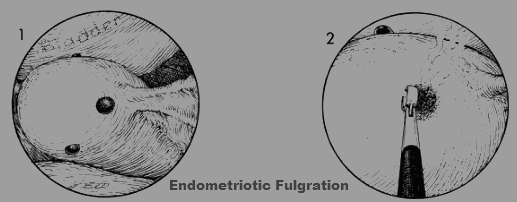What is Endometriosis?
Endometriosis is a common, chronic, progressive, and enigmatic disease involving women in their reproductive years. The internal lining from the uterus is the endometrium. When a woman has her period that endometrial tissue turns loose and is expelled since the menstrual period. A number of the endometrial cells and blood can flow with the fallopian tubes into the pelvis. Because those cells are viable, they are able to implant and grow anywhere inside the abdomen. When that takes place, the endometrium that is growing beyond the cavity of uterus is named endometriosis.
Not all patients with endometriosis use a ancestors and family history, however, many do. If a reproductive age group female having pelvic pain, severe pain together with the time of periods or pain on penetration with intercourse. The patient need to visit gynecologist for proper diagnosis. Robotic or laparoscopic surgical procedures are the best way to see endometriosis.
What are the symptom of Endometriosis?
A patient with this disease may have no symptoms, Few common symptoms are:
- Infertility
- Severe pelvic pain
- Dysmenorrhea
- Chronic pelvic pain
- Dyspareunia
- Dyschezia
- Dysuria
For a long time, understanding and practicing the optimal treatment for the patient with endometriosis has been difficult, concerning gynecologists have already been many conflicting ideas expressed in the literature. Since the early the main last century, diagnosis and treatment of endometriosis have changed dramatically. For quite some time, diagnosis of endometriosis was based on findings at laparotomy secondary to surgery for marked symptomatology from the disease or even an ancillary finding during surgery necessitated by other unrelated problems. With the advent and popularization of diagnostic laparoscopy, detecting endometriosis continues to be simplified for both patients with infertility as well as the diagnosis and symptomatology secondary on the disease. The ability to detect atypical presentations of endometriosis has allowed the gynecological surgeon to take care of even subtle examples of this entity of endometriosis more successfully. For that patient with uncomfortable symptomatology, recent advances have allowed expectant, medical, and medical procedures on this problem of endometriosis.
What are the treatment options for endometriosis?
Numerous studies in the literature have looked at different treatment modes involving treatment of infertility related to endometriosis.
- EXPECTANT MANAGEMENT
- MEDICAL THERAPY
- SURGICAL EXTIRPATION
- UTILIZING IMMUNO-MODULATORS AND AROMATASE INHIBITORS.

The best primary treatment of minimal and mild endometriosis in individuals attempting to achieve a pregnancy remains controversial, but surgical treatment is advocated by many gynecologist. It has been demonstrated that surgical treatment of endometriosis appears superior to other treatment forms, and the use of laparoscopic cautery fulgration may provide a higher pregnancy success rate than medical therapy. Therefore, the use of laparoscopy for treatment of infertile women with endometriosis should be used as the standard treatment.
The essential procedures for laparoscopy are identical whether this kind of surgery is utilized for diagnosis or medical procedures. Either a single or a multi incision technique might be employed. For patient of endometriosis, the operative laparoscope is utilized. The operative scope is attached to a relevant video monitor to enlarge the operative field and invite the operating room team to see the procedure. In simple diagnostic or surgical treatments, the operative laparoscope comes with a advantage over the diagnostic laparoscope for the reason that it enables an operative instrument to become passed down its channel to stabilize structures or aspirate blood or fluid from your operative field.
The purpose of electrocoagulating fulgration on endometrial implants found at the time of laparoscopy is to destroy the implantation site. The purpose of the laparoscopic operation is to eliminate endometriosis implants. Destruction of the endometrial implantation site actually does not changes the potential of the mesothelium in the pelvis to form endometriosis. But the main advantage of fulgration hoped that by eliminating the existing endometriosis, the surgeon can relieve the symptomatology particularly in relation to if the female is suffering from infertility. In many cases of severe endometriosis, repeat laparoscopic surgery and hormonal treatment of endometriosis is required
What are the precautions taken during endometrial fulgration?
Extreme care must be exercised in fulgurating endometriosis in the pelvis to avoid electrocoagulation of adjacent vital structures, such as bowel or bladder.





